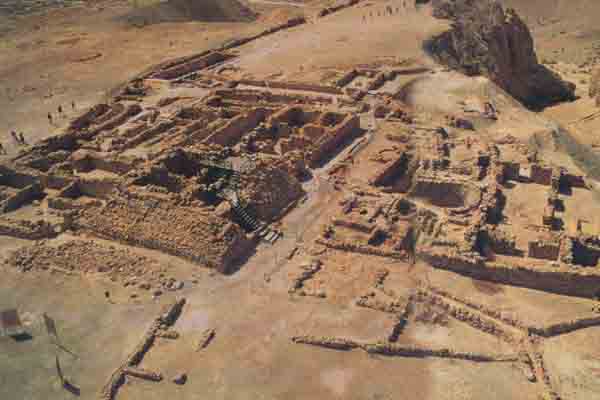Image Details

Duby Tal and Moni Haramat/Albatross
Rising above the Dead Sea—a thin blue stripe on the horizon—the Qumran ruins stand on a marl terrace 120 feet above the shore. Located on a critical ancient trade route between Jerusalem and the east, the settlement would have provided weary travelers with a convenient resting spot and commercial entrepôt, argue authors Alan Crown and Lena Cansdale. They dismiss the popular identification of Qumran as villa, fortress or isolated religious community of the scroll-writing Essene sect.
After crossing the Dead Sea on boats laden with salt, frankincense, myrrh and other luxurious goods from the east, traders would rest at Qumran before continuing along the Salt Road, literally the Salt Ascent route, Ma’aleh Hamelach, to the busy Jerusalem markets and then on to the Mediterranean coast. The heavily fortified tower, with modern stairs, left of center, would have protected travelers staying at the entrepôt. Burnt and partially destroyed in what must have been a brutal siege, the tower provides evidence that the Qumran residents staunchly defended themselves when the Roman onslaught came.
